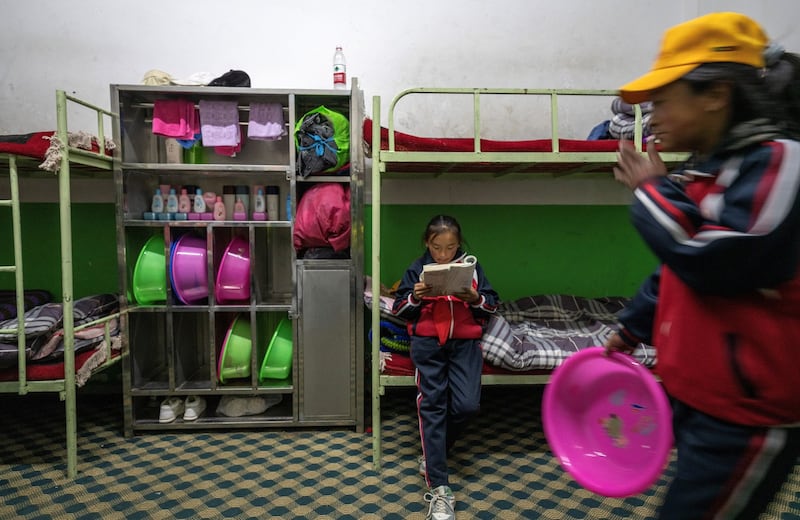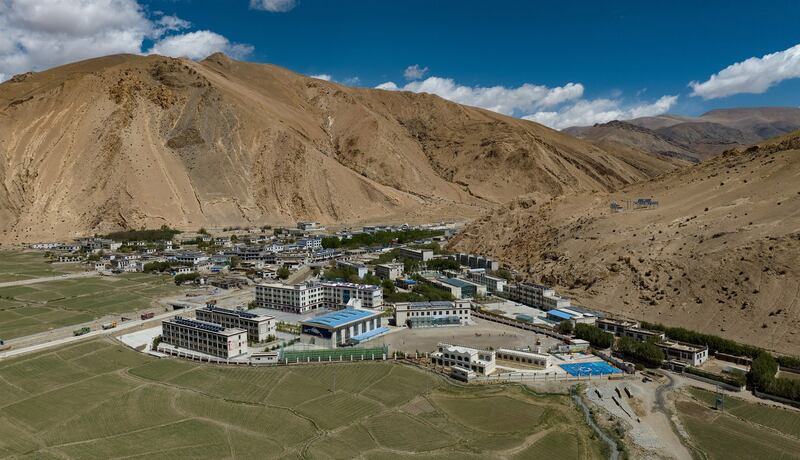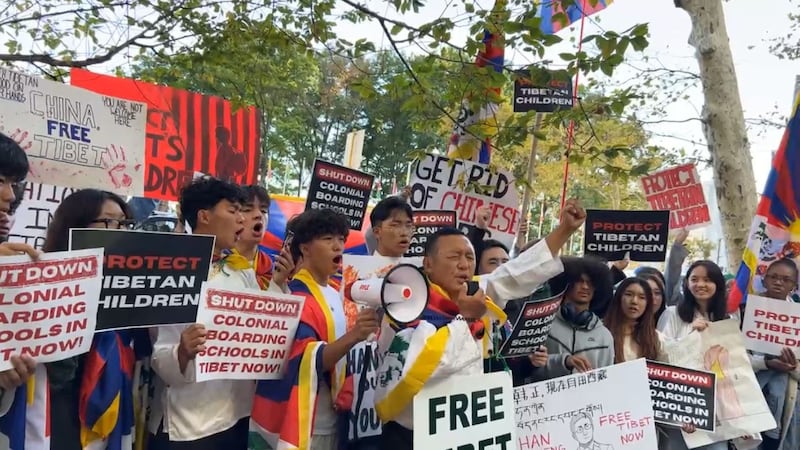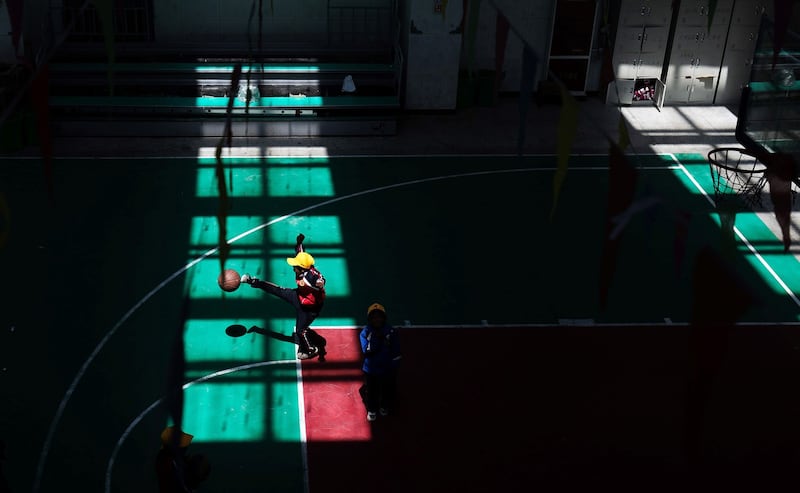On his first visit back to the Tibetan Plateau in nearly a decade, Sengmo was surprised to hear his youngest nieces and nephews converse in Chinese rather than their native tongue.
As a member of the Tibetan diaspora, Sengmo knew about the Chinese government’s campaign to assimilate ethnic minorities in the broader culture, including through the curriculum at boarding schools where students stay for weeks at a time.
But it was only after witnessing firsthand how his elementary school-age relatives interacted with one another that he thought: “They will not be like us.”
For the government, that is doubtless the point. Under leader Xi Jinping, China has applied harsh tactics to promote party ideology over local traditions, cultures and religious practices. In the Tibet Autonomous Region and the southwestern Chinese provinces where many Tibetans live, that has meant prohibiting photographs of the Dalai Lama, pressuring monks to denounce the spiritual leader, and restricting communications with people outside of the area.

Though movement in and out of Tibetan areas remains as limited as ever, China's long-awaited loosening of COVID-related travel controls impelled Sengmo to make a rare trip home. Sengmo is a pseudonym to protect his family in Tibet from any retaliation from Chinese authorities.
Members of the diaspora granted travel visas told RFA that they were able for the first time in years to see how their homeland is changing. Given the importance of language to a culture, a linguistic move away from Tibetan among young students attending residential schools is among the most significant shifts returnees witnessed.
Sengmo said the courses at the boarding school his nieces and nephews attend are taught in Mandarin, with Tibetan instruction limited to one hour a week. The rest of his family still speaks their native language, but the children are away for two-week stretches, and he fears his relatives won’t have enough time to counteract the Chinese-heavy education provided by the school. Other sources said the Tibetan instruction was more frequent but still insufficient.
Liu Pengyu, a spokesman for the Chinese Embassy in Washington, defended the boarding school system as a way to improve the educational opportunities for Tibet's scattered population.
Students aren’t forced to attend, and parents can visit whenever they want, he said in an emailed statement.
“Courses of traditional culture, such as Tibetan language and literature and folk dance, are widely available, traditional food unique to the Tibet Plateau is provided, and students are allowed to wear traditional dresses at these schools,” he said.
But a panel of experts advising the United Nations has said the instruction is heavily weighted toward the dominant Han culture. Roughly one million students attend the schools and risk an "erosion of their identity," the group warned.

An ugly legacy
Critics draw comparisons to past efforts to assimilate Indigenous cultures in the U.S. and Canada by forcing young children to learn English in remote schools that kept them from their families.
Conditions there were often especially brutal, and former students have reported a variety of mental health issues, including problems with anxiety, depression and addiction. The boarding school policies in the United States lasted more than a century, finally ending in the 1970s.
Now the U.S. has emerged as one of the loudest opponents of China’s educational efforts. Last month, the State Department announced visa restrictions on unnamed Chinese officials involved with the “forced assimilation” boarding school program.
Gyal Lo, an educational sociologist and activist who has studied boarding schools in Tibetan areas of China, said the policy began to be applied to preschool-aged children in 2016. Now, three out of every four children in that age group attend a residential school, he said.
Among them are his young relatives back in Tibet. In a recent op-ed for the New York Times, Gyal Lo wrote about how his brother had called him seven years ago to express his concern that his granddaughters – ages 4 and 5 at the time – were already beginning to reject Tibetan traditions.
Gyal Lo said his brother’s family felt they had no choice. Not sending the young children to the school would shut them off from any educational opportunities and the family from government benefits.
“The distance is already breaking out between the older generation and the younger generation,” Gyal Lo told RFA when asked for an update on his brother’s family. “They will no longer be able to share a common identity and values. We’re seeing the breaking of the home nest.”
He called the inclusion of preschool-aged children in boarding schools a threat to “Tibetan civilization.”

The language loss isn’t necessarily limited to residential schools. Lhamo said children aged 3 to 6 she met on a recent trip back spoke Chinese even though they returned home from school every day. When she addressed them in Tibetan they “looked confused and puzzled,” she said. Lhamo also asked to be identified by a pseudonym to avoid adding any scrutiny to her family back in Tibet.
The curriculum had changed too, she said. History textbooks her relatives read for school featured unflattering depictions of the U.S. as a global bully since the end of the Cold War, Lhamo said.
Cameras everywhere
On his trip home, Sengmo said he noticed other changes too, apart from the classroom.
Walking into his local monastery he had to be scanned by a facial recognition camera before he went in, a level of security he wasn’t used to. Inside he said he noticed fewer worshippers and less interaction between laypeople and monks, even though monasteries operate as the spiritual and cultural heart of many Tibetan communities.
The sense of being watched was pervasive. “There were cameras everywhere,” he said.

Sengmo blamed the increased surveillance for what he said was a greater level of circumspection among the friends and relatives he met with. Even behind closed doors, the Tibetans he met with appeared to be careful of what they said.
“It used to be that you could talk about anything at home,” Sengmo said. In the future, it may not even be certain that everyone there will speak the same language.
Edited by Abby Seiff
